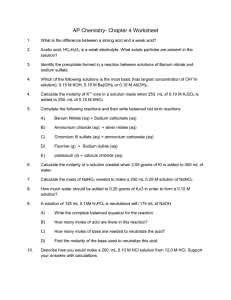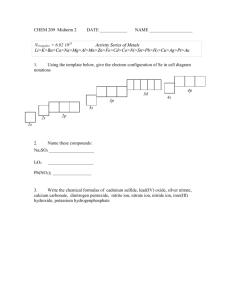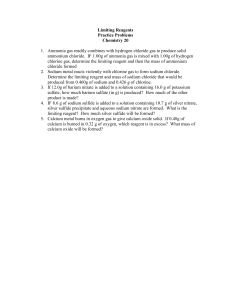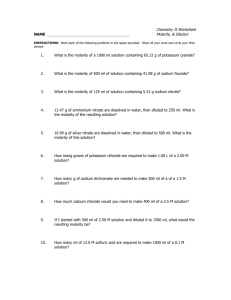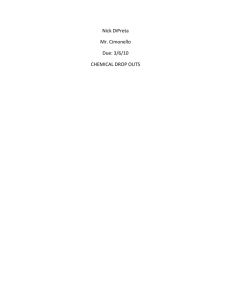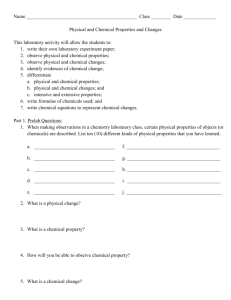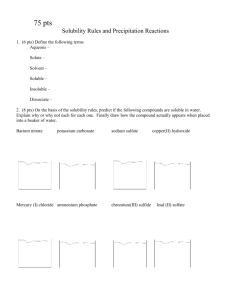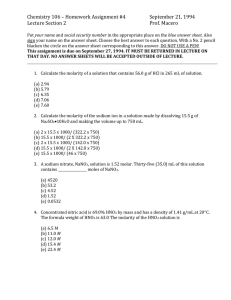Part A: Describing Molar Concentration
advertisement
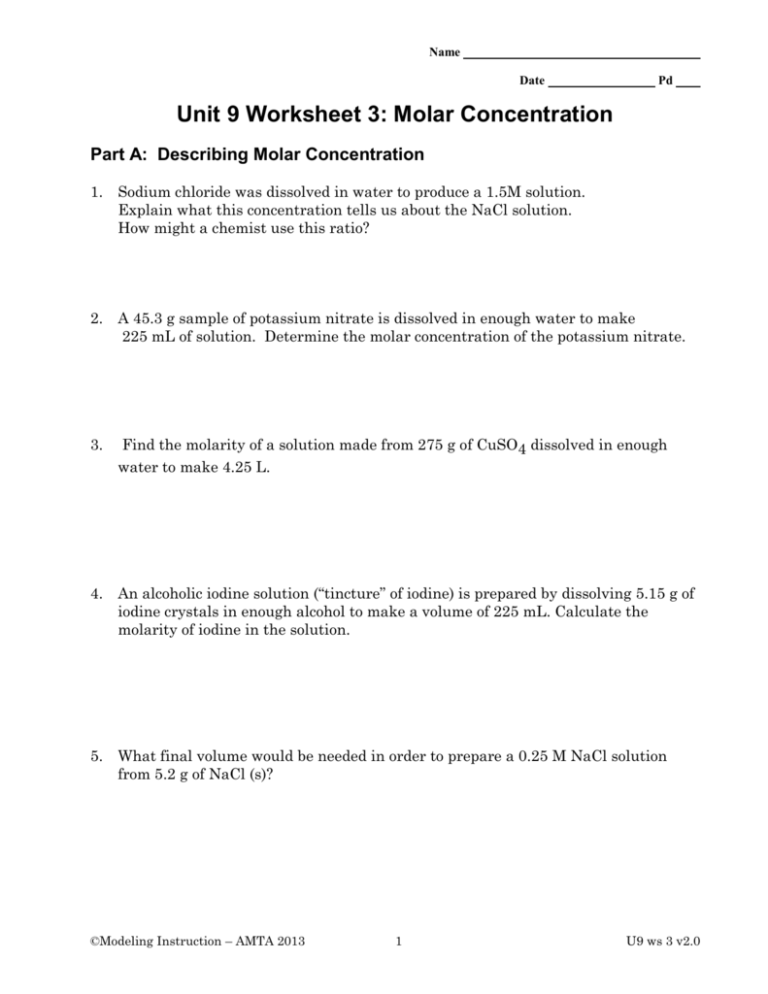
Name Date Pd Unit 9 Worksheet 3: Molar Concentration Part A: Describing Molar Concentration 1. Sodium chloride was dissolved in water to produce a 1.5M solution. Explain what this concentration tells us about the NaCl solution. How might a chemist use this ratio? 2. A 45.3 g sample of potassium nitrate is dissolved in enough water to make 225 mL of solution. Determine the molar concentration of the potassium nitrate. 3. Find the molarity of a solution made from 275 g of CuSO4 dissolved in enough water to make 4.25 L. 4. An alcoholic iodine solution (“tincture” of iodine) is prepared by dissolving 5.15 g of iodine crystals in enough alcohol to make a volume of 225 mL. Calculate the molarity of iodine in the solution. 5. What final volume would be needed in order to prepare a 0.25 M NaCl solution from 5.2 g of NaCl (s)? ©Modeling Instruction – AMTA 2013 1 U9 ws 3 v2.0 6. Draw a particle diagram of each of these ionic substances in solution. Then calculate the molarity of each ion present in each of the following solutions. a. 0.25 M AlCl3 b. 0.375 M Na2CrO4 c.0.0020 Ca(OH)2 d. 0.103 M Na3PO4 7. How many grams of silver nitrate are needed to prepare 250 mL of standard 0.100 M silver nitrate solution? 8. If 10.0 g of AgNO3 is available, find the volume needed to prepare a 0.25 M AgNO3 solution. 9. Concentrated hydrochloric acid is made by pumping hydrogen chloride gas into distilled water. If concentrated HCl contains 439 g of HCl per liter, what is the molarity? ©Modeling Instruction – AMTA 2013 2 U9 ws 3 v2.0 Part B: Molar Concentration and Stoichiometry 10. How many moles of lead(II) hydroxide (solid) can be formed when 0.0225L of 0.135 M Pb(NO3)2 solution reacts with excess sodium hydroxide? (Hint: Use a BCA table). 11. Barium nitrate reacts with aqueous sodium sulfate to produce solid barium sulfate and aqueous sodium nitrate. Abigail places 20.00 mL of 0.500 M barium nitrate in a flask. She has a 0.225M sodium sulfate solution available. What volume of this solution must she add to her flask of barium nitrate so she has no excess reactant left over? (Use a BCA table to answer). 12. Calcium chloride (aq) reacts with sodium carbonate (aq) to from solid calcium carbonate and aqueous sodium chloride. Determine the volume of a 2.00 M Calcium chloride solution would be needed to exactly react with 0.0650 L of 1.50 M Na2CO3. (Use BCA!) ©Modeling Instruction – AMTA 2013 3 U9 ws 3 v2.0
